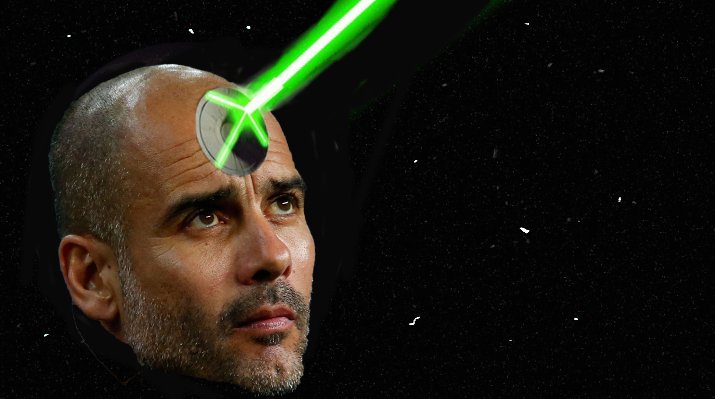This article was co-authored by Euan Dewar (@EuanDewar) and Mark Thompson (@EveryTeam_Mark ).
Manchester City. Doing alright for themselves aren’t they?
It’s been a while since an English football team has loomed over the rest of Europe, hanging ominously in the air. Extraterrestrial. Imperial.
“That’s no moon. It’s a Pep Guardiola team.”
Through 12 matches the boys in blue sit atop the league with 40 goals scored (13 more than the team in second - their neighbours United). Four teams in last season’s Premier League didn’t even reach 40 goals after 38 matches. Their expected goals tally isn’t that far off either: +31.9 in terms of non-penalty xG and +34 overall. They’re blowing away all who stand in their path.
Perhaps, because a certain strain of English fan has always been sceptical of Guardiola’s success, the dominance of this current City team isn’t yet fully appreciated. Not only do they reign supreme in the surface numbers, but how they go about the game doesn’t let their opponents have a say either.
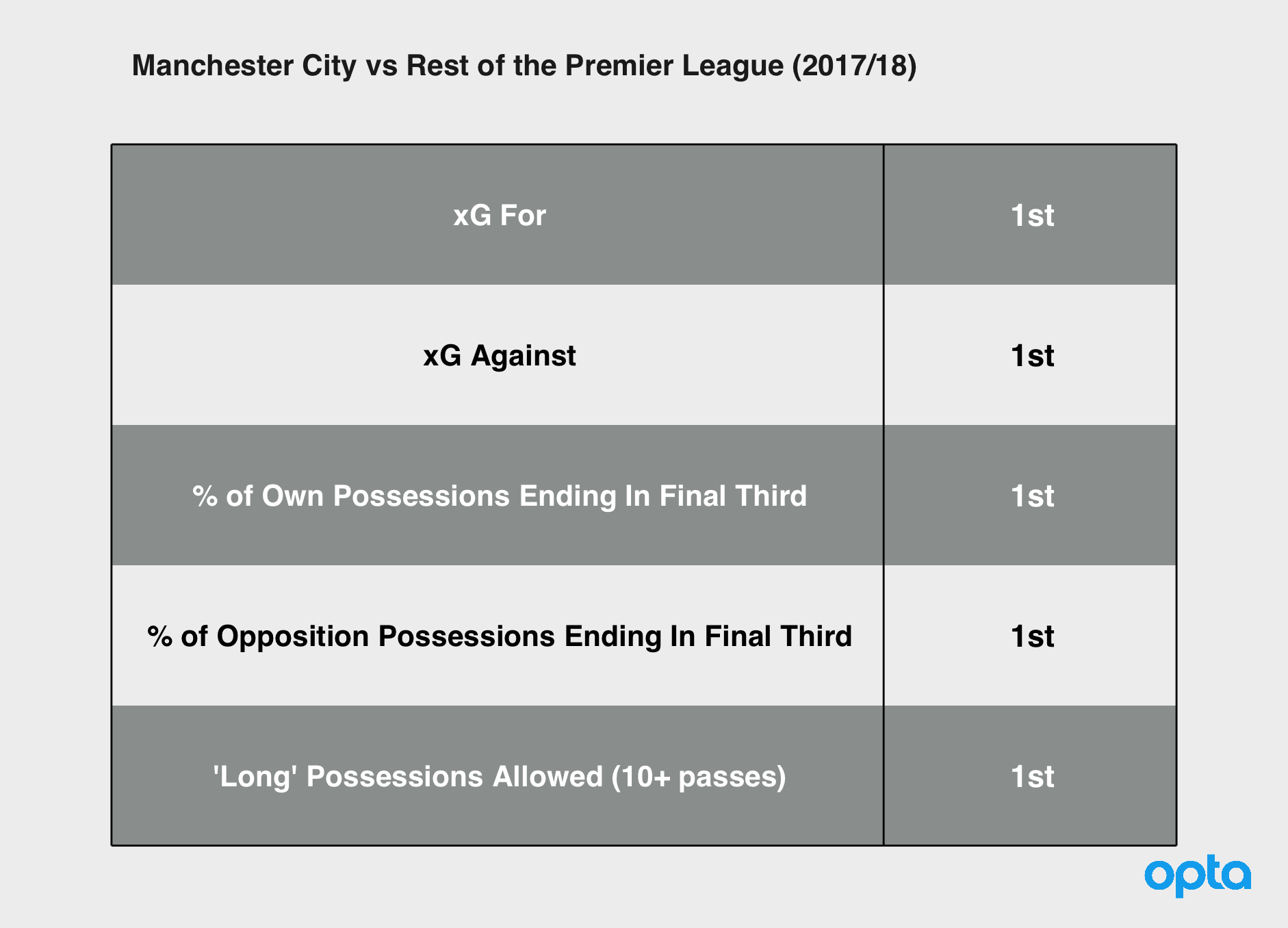
City average over five sequences of 20 or more consecutive passes per game, which is freakin’ phenomenal. The next nearest side in (Opta’s) living memory is the Barcelona side of 2012/13 with 3.9, and then Bayern of 2015/16 with just over three. Guardiola's influence here is clear. There are only two other sides who average more than 2.5 such sequences per game. City are doubling that.
They also get to the final third in over 55% of their possession sequences, at the top of the historical list along with Pep's Bayern Munich sides of 2013-2016. For any who were sceptical about whether Guardiola could ‘do it in the Prem’, the answer is now clear.
Patient build-up is only half the story with City. A defining characteristic of Pep’s sides is how they shift through the gears, moving the ball (and consequently the opposition) from side-to-side until they spot an opening, at which point they up the pace and cut through the defence. These facets to their game can be seen in the varied speed of their output. In the aggregate they’re as slow as you might expect, but look solely at possessions leading to shots and the threat is apparent. When the time is right, they go for it.
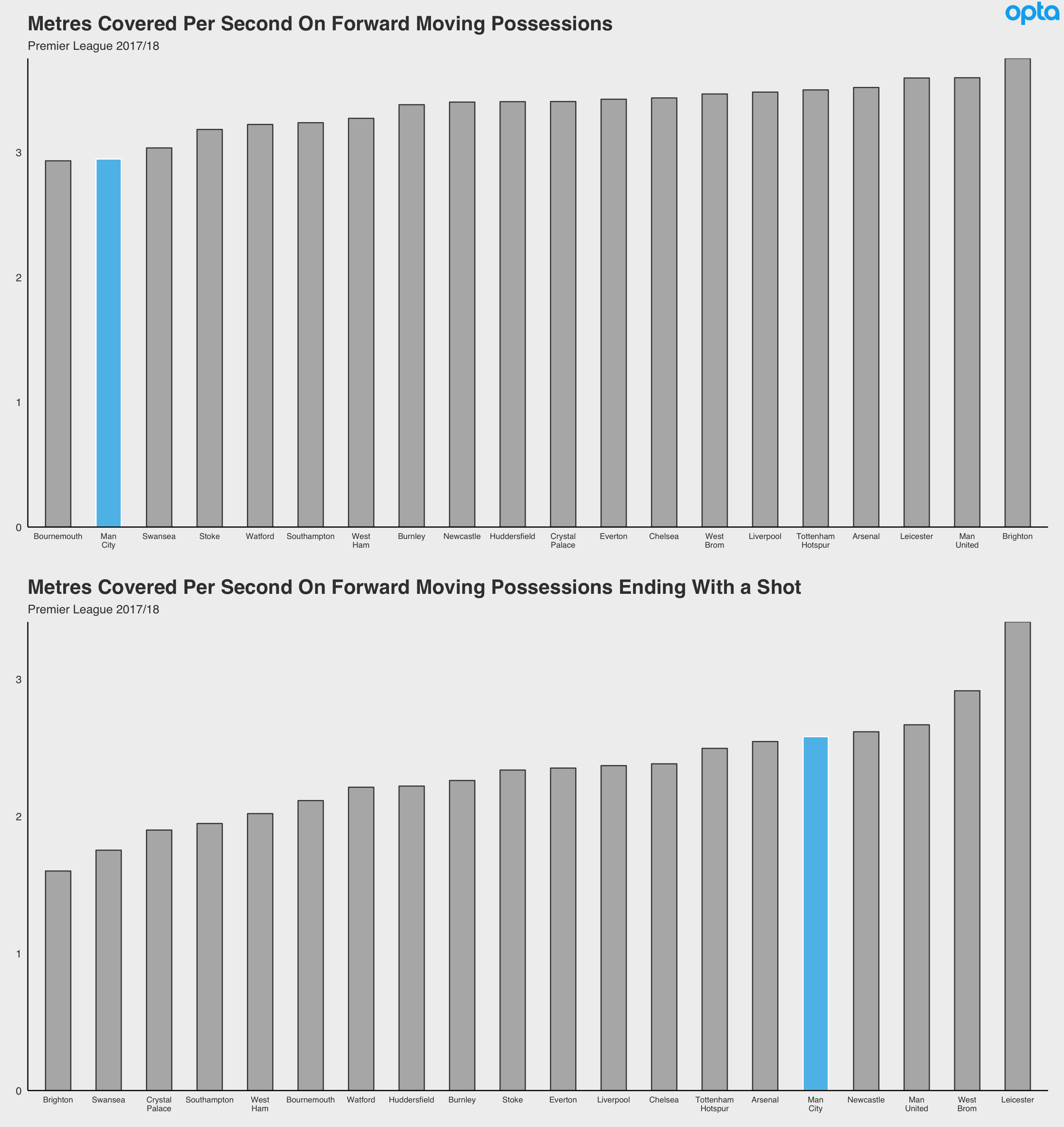
Shots from counter-attacking opportunities represent a lower proportion of City’s attacking diet compared to the rest of the league, as you might expect from a team who dominate possession like they do. However, they still get plenty of them - the 3rd most in the league from transitions that last 25 seconds or fewer (with a transition defined as a possession that starts in a team's own defensive third and ends in the opposition third). This is also an even higher proportion than in Pep’s last seasons at Bayern.
City’s transition possessions go through the right half-space at the highest rate in the league and left half-space at the second highest. This makes sense considering how much David Silva and Kevin De Bruyne love pulling the strings from these zones. When you combine that duo with the attacking menace of the likes of Leroy Sané and Raheem Sterling you get downright lethal counters like their second goal against Leicester at the weekend. The foxes went from attacking to picking the ball out of their own net within 15 seconds.
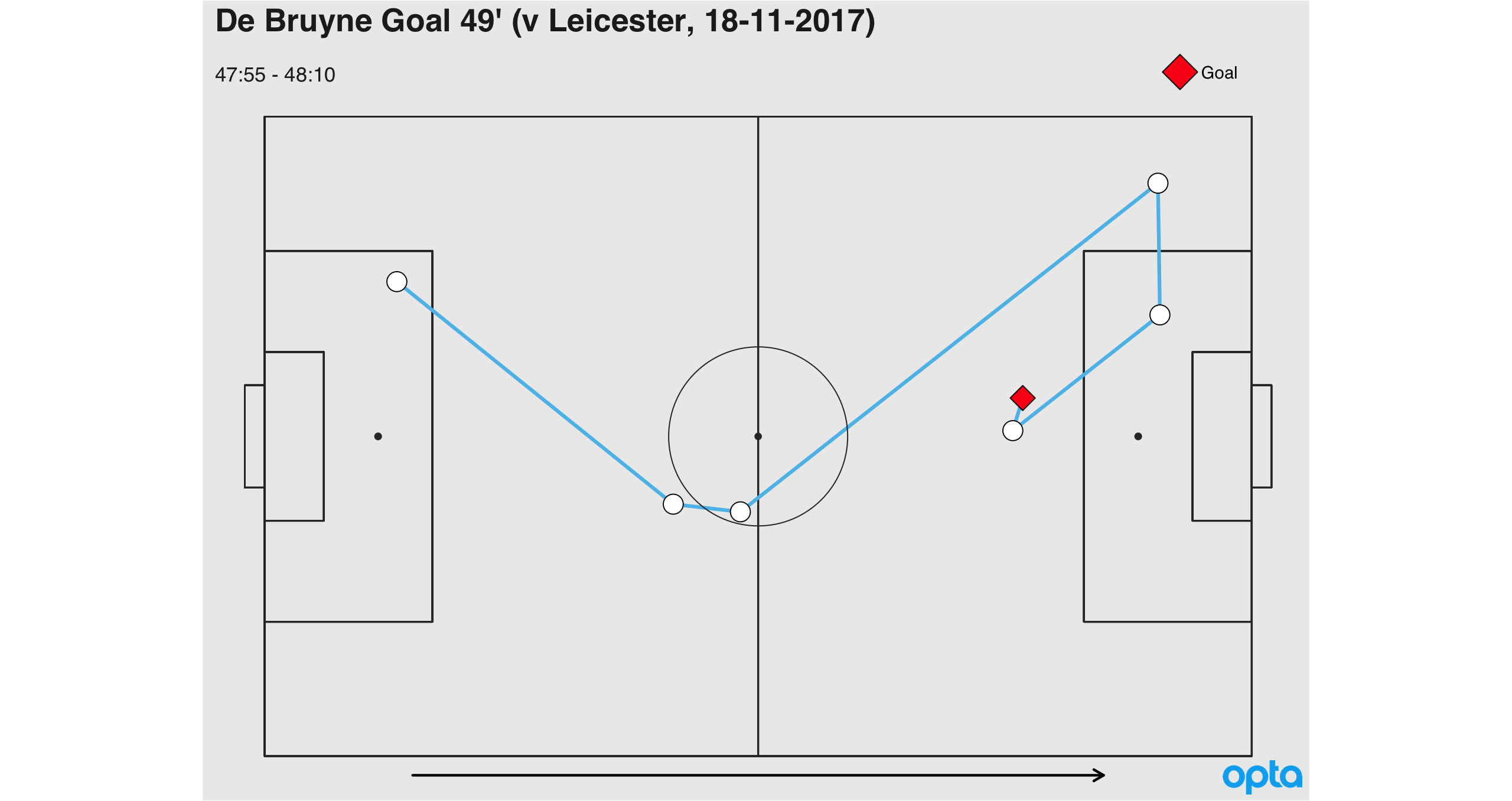
The Other Side of the Ball
Possession is nine-tenths of the law in some places, a criminal offence in others, but for Guardiola it’s also a way of defending. Not only can the opposition (obviously) not score if you’re the ones with the ball, but Pep also uses it to help his teams get into position to counterpress. City rank a clear 1st in the PL in terms of shots in the opposition box that come within 10 seconds of a turnover in the final third.
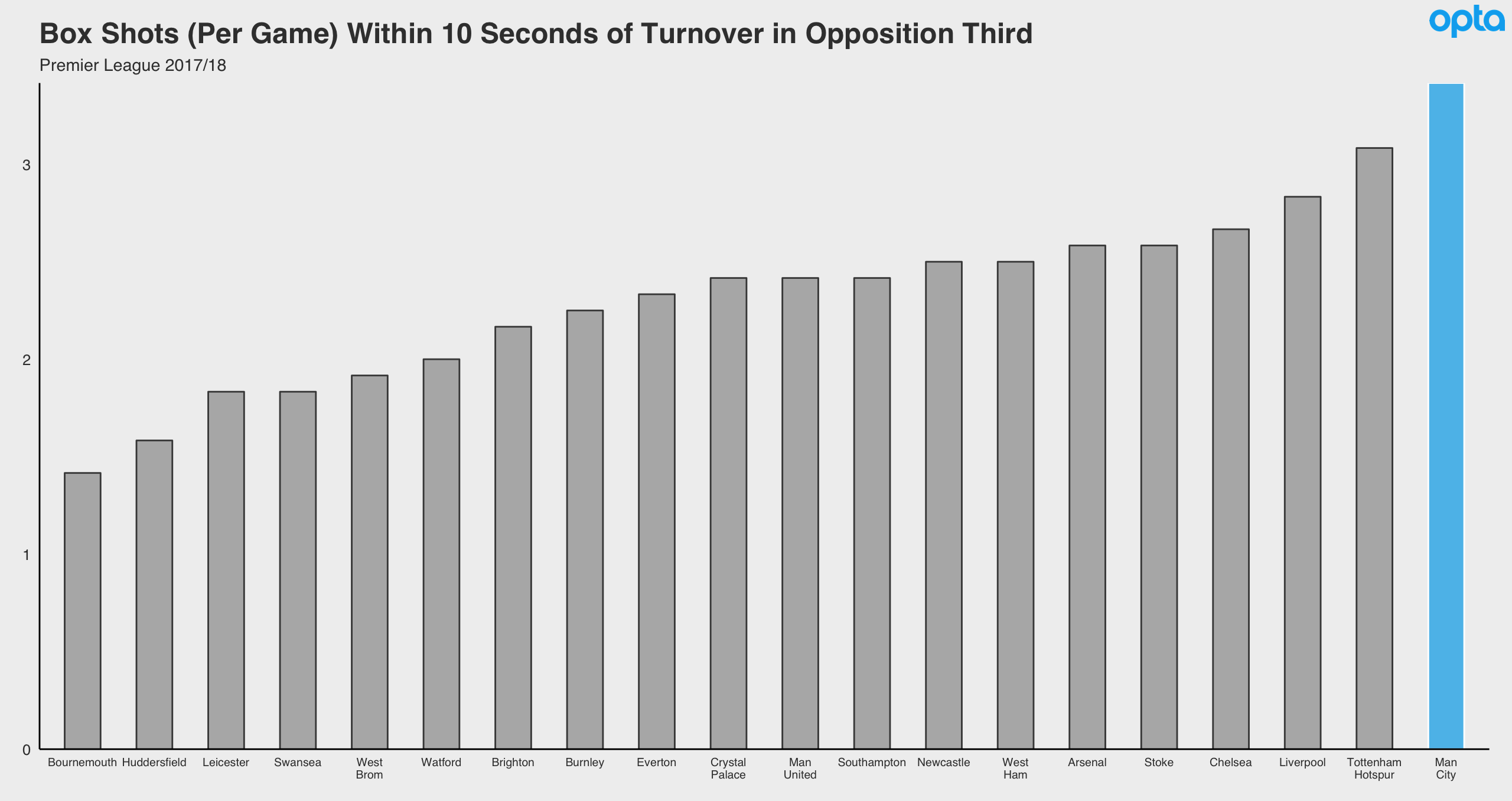
As a result of this combination of defensive techniques, City’s opponents’ only get to the final third in 34% of their possession sequences. This isn’t quite at the historically good levels as City’s passing stats, but the closest rate in the Premier League this season is Liverpool on 39%. City allow their opponents just under 2.5 sequences of ten or more consecutive passes per game, far below the average of league average of eight. The next lowest figure is for Spurs, allowing just 3.7 per game, but there’s daylight in that distance between City and the London side.
However, every strategy in football has a weak spot and City’s is the same as it always has been for teams in their mould. Dominating the play, pinning the opponent back in their half, it leaves space open behind that can be exploited.
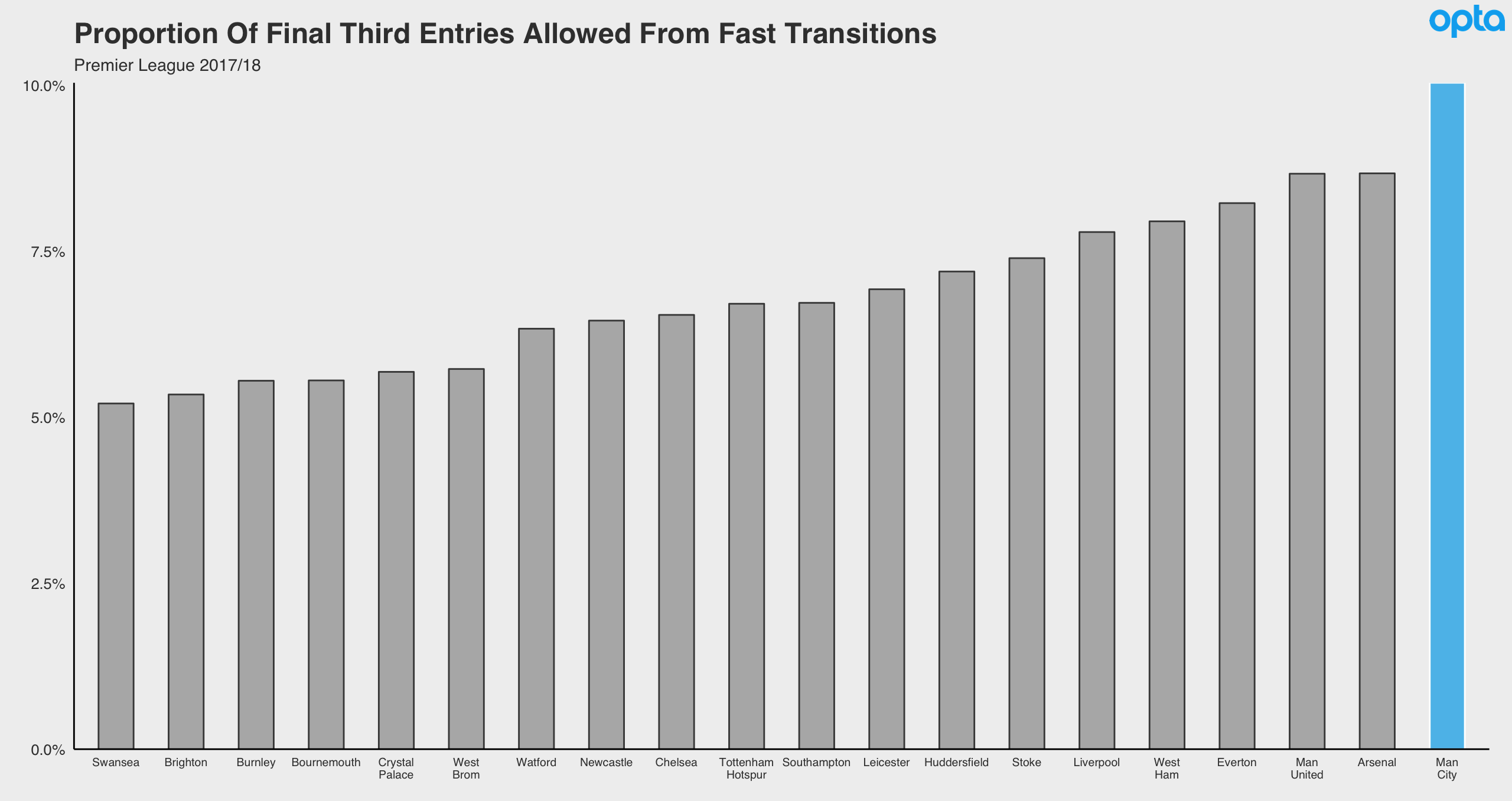
The thing is though, Pep has been coaching in a variation of this style for a decade now. He’s obviously aware of this issue and has spent plenty of time tinkering with the approach in order to minimize it. As a result, the opportunities the opposition gets are few and far between. While City give up a fair few transition opportunities, this season they have allowed the fewest that reach their defensive third as well as the fewest shots in transition.
However if you can get into their danger-zones then all is not lost. City's underbelly isn't exactly soft by any means, but it isn't quite as suffocating relative to everything else.
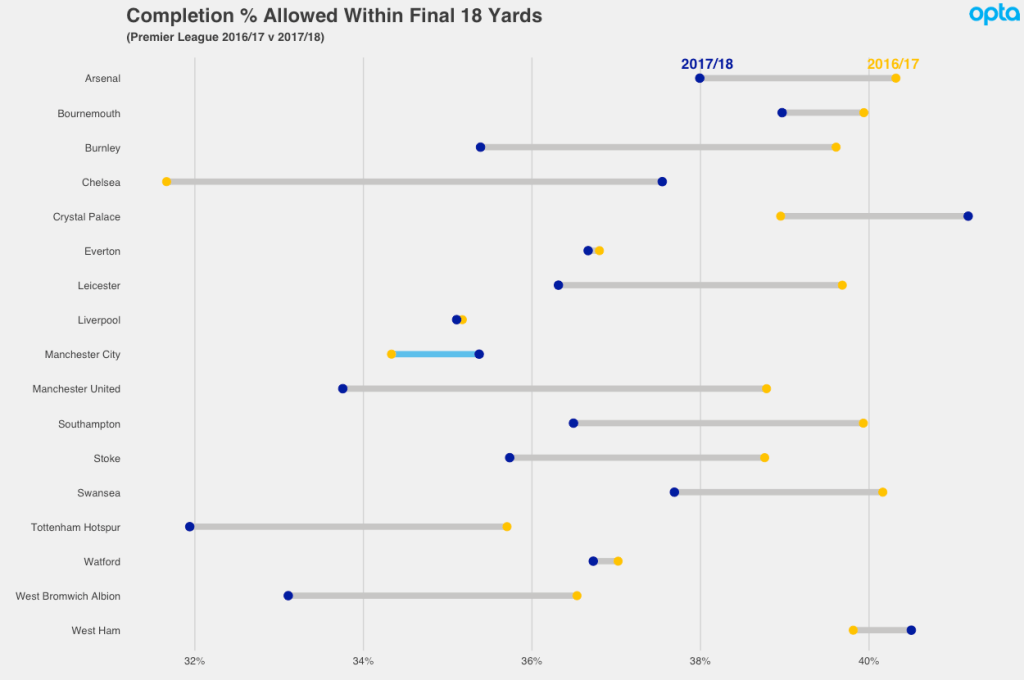
Really though, Manchester City aren’t the Death Star. The Death Star had a clear flaw that was easily exploited by a space farm-boy. City are scarier than that.
None of this is totally permanent of course. Football’s a funny, volatile sport and things could get tough when the fixtures start to pile up. As things stand though, they look well set to impact both the domestic and European scene in a way an English club hasn’t for some time.
Thanks for reading. Have yourselves a good week out there!
